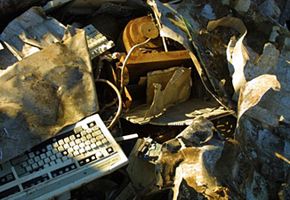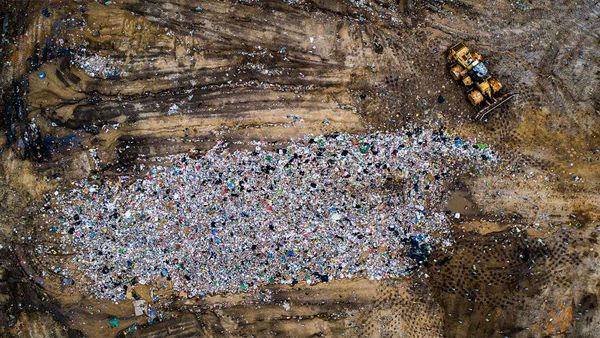If we lived in the Middle Ages, trash would be scattered and piled on the streets just outside our homes. Fortunately, we live in times that are much more civilized and sanitary. Our refuse is securely and tidily contained in garbage bags, canisters and dumpsters. Sanitation workers pick it up and ferry it off to be processed and sent to a landfill, where it will be buried underground. At that point for most of us, our garbage (defined by the U.S. Environmental Protection Agency, or EPA, as "solid waste") is out of sight and out of mind. But just because we don't think about our trash once it leaves our homes or offices, doesn't mean it doesn't continue to exist -- and build up.
In fact, solid waste in the United States is growing at a rapid rate. The EPA estimates that each American produces 4.6 pounds (2 kilograms) of garbage a day. In 1960, our daily rate of disposal was closer to 2.7 pounds (1.2 kilograms) of garbage per person a day. And the landfills where most of our trash ends up have been closing across the country -- usually either because they have filled up or they didn't meet federal safety standards. According to the Clean Air Council, there were 18,500 landfills in 1979. Keep America Beautiful, Inc. estimates that number shrank to 8,000 in 1988 and to 1,767 in 2002. Throughout the rest of the past decade, the number has stayed in that range.
Advertisement
Fortunately, this doesn't mean we're close to going back to Middle Ages-style trash storage. Today's landfills are larger and more efficiently managed, which is why we are able to survive with fewer of them. Responsible disposing, too, has made a dent in the amount of trash carted off to landfills. If you factor in activities like recycling and composting, the amount of garbage the average American sends to the landfill today is much closer to the 1960 statistic mentioned above.
Despite the advances in waste management made over the past several decades, there's no getting around the fact that we still have a lot of trash. And as the Earth's population grows, we have more and more garbage producers born every minute. Landfills, while considered practical for now, are not a desirable long-term solution for containing our solid waste because they pose the risk of possible land, air and water contamination.
So what can we do to reduce solid waste and send less of it to landfills? Recycling is an obvious solution, as it has already had an impact on trash reduction. However, there are a number of other ways we can cut back on solid waste. In fact, an entire science, known as garbology, has been devoted to that very goal. On the following pages, we'll look at these methods as well as the potential problems associated with them, so keep reading for more trash talk.
Advertisement

